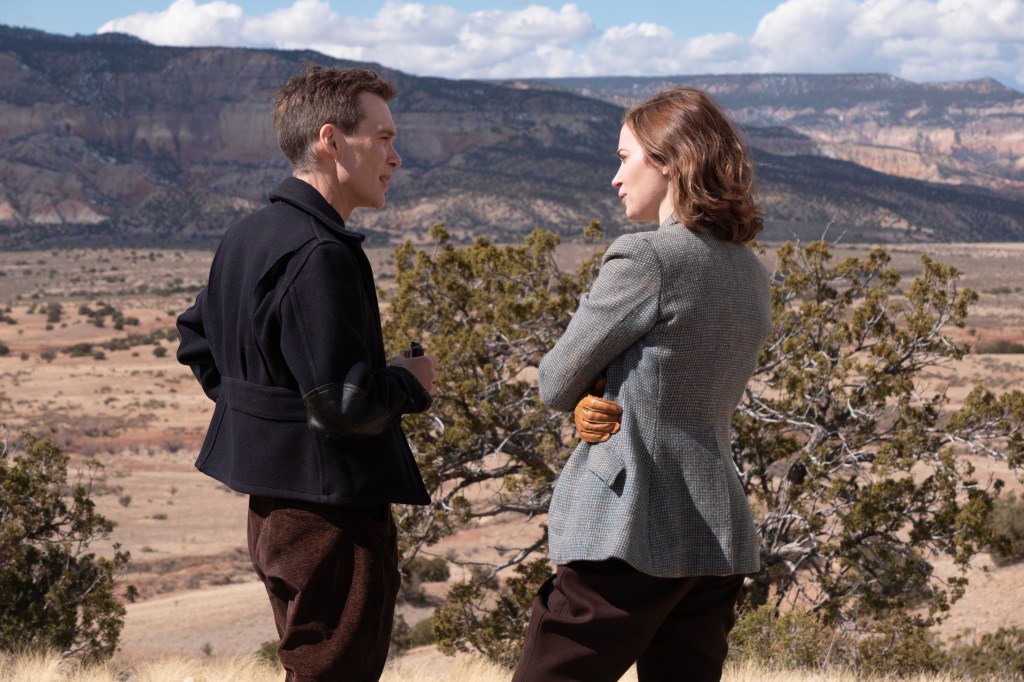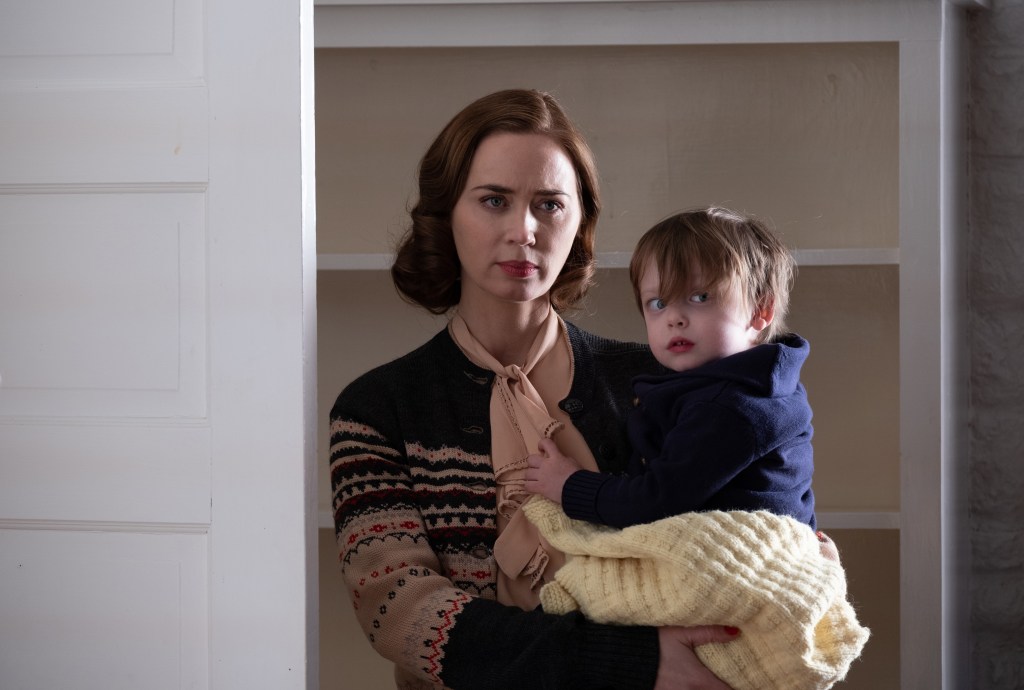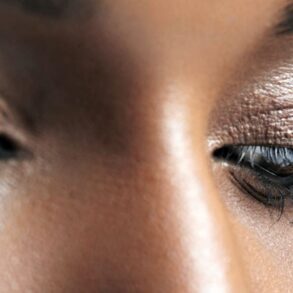“She blended in — there was no ‘Kitty’s world,’” “Oppenheimer” production designer Ruth De Jong says of the woman portrayed by Emily Blunt in Christopher Nolan’s blockbuster.
Kitty is a scientist with her own ambitions when she meets J. Robert Oppenheimer (Cillian Murphy), the man who led the atomic bomb project. Her career takes a backseat when she falls in love with him, and she watches her life slip by as his work overwhelms and consumes them both.
When she first appears in “Oppenheimer,” however, Kitty is a well-to-do woman filled with confidence — “so bright and alive and unwilling to contort and conform to the housewife ideal,” Blunt says.
And while the film very much centers around what is going inside Robert’s mind, Kitty keeps her husband grounded throughout the movie.
Editor Jennifer Lame took care to convey Kitty’s air of confidence when she and Robert first meet. “There needed to be a softness there,” she says. “I wanted you to see the compassion they have for each other.”
Ellen Mirojnick’s costumes for Kitty at that point convey elegance: Kitty is wearing a shade of blue similar to tones worn by Robert, her silhouette simple. Makeup department head Luisa Abel crafted a period palette for Kitty in this scene only. “From that stage on, it transfers into character makeup for that outdoorsy Los Alamos look, and when she starts to drink, it breaks down,” Abel says.

L to R: Cillian Murphy is J. Robert Oppenheimer and Emily Blunt is Kitty Oppenheimer in OPPENHEIMER, written, produced, and directed by Christopher Nolan.
Melinda Sue Gordon
Things really deteriorate for Kitty when the couple moves to Los Alamos. She starts wearing jodhpurs and boots — “almost tom-boyish,” says Blunt — and Mirojnick outfitted her in shades of cool green, taupe and brown.
Once Kitty becomes a wife and mother, her clothes become practical, wearing trousers and blouses designed to appear as if they were pulled individually from her closet. During a fitting, “if it looked too much like an outfit, it would come right off,” says Mirojnick, who would put clothes “in a pile on the floor and say, ‘OK, just grab something. Let’s see what we get.’”
As motherhood and her husband’s career puts Kitty in the backseat, she uses alcohol as a coping mechanism, all while continuing to loyally support her husband. “I think she just drove herself insane at the ironing board, which was a place she should never have really been,” says Blunt, noting the isolation and loneliness Kitty felt in Los Alamos.

Melinda Sue Gordon
When Kitty testifies at a government hearing about his security clearance, she forcefully stands by him. “It was just a cool setup to have someone who was deemed so unpredictable and problematic,” Blunt says, pointing out that Kitty is set up to fail. Instead, she delivers witty and insightful answers to the interrogators.
“The scene becomes about reclamation, of coming back to life and fighting for him when nobody would,” Blunt says. “You see it all come out with this scene; she’s so forceful.”
In editing that scene, Lame kept going back to the idea of Kitty protecting Robert. “She is one of the few people that stands up for him regardless of all the stuff,” she says. “Chris and I did many passes to make sure you felt the humanity even if it’s buried under her issues. I wanted you to feel her anger towards him— her sacrifice and her anger — and she still showed up.”
Composer Ludwig Göransson found Kitty’s piano-based theme while scoring that scene, inspired by the character’s love and loyalty to her husband — no matter what. Her theme “is based off certain chords with long pauses in between,” Göransson says. “This is something that is going to keep you grounded, but there’s tremendous tension you feel in between the pauses.”
Once Göransson found the theme, he was able to integrate it to other scenes. “Everyone thinks it’s going to go one way, but she’s showing everyone where she is,” he says. “She also pushes him to the places he wasn’t able to go without her, and that music needed to push you into a place you didn’t know existed.”

Melinda Sue Gordon
The film spans decades, but hair department head Jamie Leigh McIntosh had to contend with Nolan’s rule of no wigs. Blunt’s shoulder-length blonde hair was dyed black and cut shorter, to a length that would reflect the passage of time without a wig and could endure various styles. McIntosh opted to not use visible grays on Kitty.
“I used a temporary hairspray color and sprayed that on top of the finished hairstyle,” she says. “It worked for so many different reasons. It gave depth, harshness and darkness, but appeared as if she had a build-up of color. Back in the day, women tried to cover up gray by coloring their hair regularly, not knowing what we know now,” she says, resulting in “that terrible buildup.”
To reflect Kitty’s aging, Abel moved from subtle custom-made stretch and stipple with wrinkles around the eyes into “full prosthetics.”
Says Blunt: “By the time you’re in that hearing she’s looking pretty drab and conservative; you want that image of someone who looks put together, but they aren’t at all.”

Universal Pictures
This post was originally published on this site be sure to check out more of their content.








